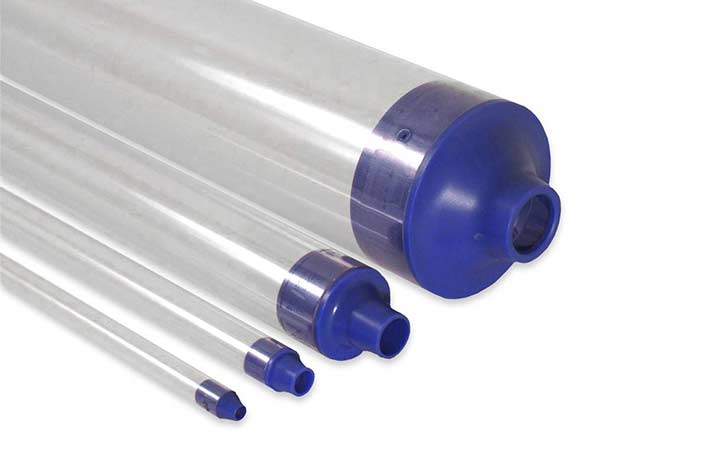- Clear PVC Enables visual inspection of samples
- Resuable Weight System The only bailer available with an optional resuable weight system
Overview
The EcoBailer has been designed to collect well samples in a quick and hastle free manner, the clear PVC body enables inspection of samples easily whilst having a density of 1.31. It is rigid so is less likely to bend in comparision to other Polyethylene bailers and has a longer bottom spout which helps prevent silt from interfering with the check ball resulting in potential leakage. An advantage to choosing the EcoBailer are it has a custom emptying device for regulating discharge flow and this is included with every bailer.
An additional feature of this bailer is that it is the only bailer with an optional reusable weight system to increase sink rates. This option enables the user to simply screw a 7/8" nut to the EcoBailers bottom spout which results in a super fast sink rate, no other bailer offers this innovative system. Alternatively there is the option to use the Superweight PVC EcoBailer which gives fast sink rates.
Manufactured by: ETP
Model: EcoBailer - Clear PVC Disposable Water Bailer
Services offered for this product
- Sales
- Rental
- Installation
- Calibration
- Maintenance
Specification
| Product Number | Description | Volume per Unit | Units per Case |
| ECOPVCWT–153 | 1.5" x 3' Clear PVC Weighted EcoBailer | 1025 ml |
24 |
FAQ's
- Lower cost for instrumentation
- Faster sampling
- Little/no water agitation
- Simple
- Allows sampling in wells with small water volumes
- Variety of sample sizes
- Can be used to identify stratified layers of water chemistry in wells/boreholes



